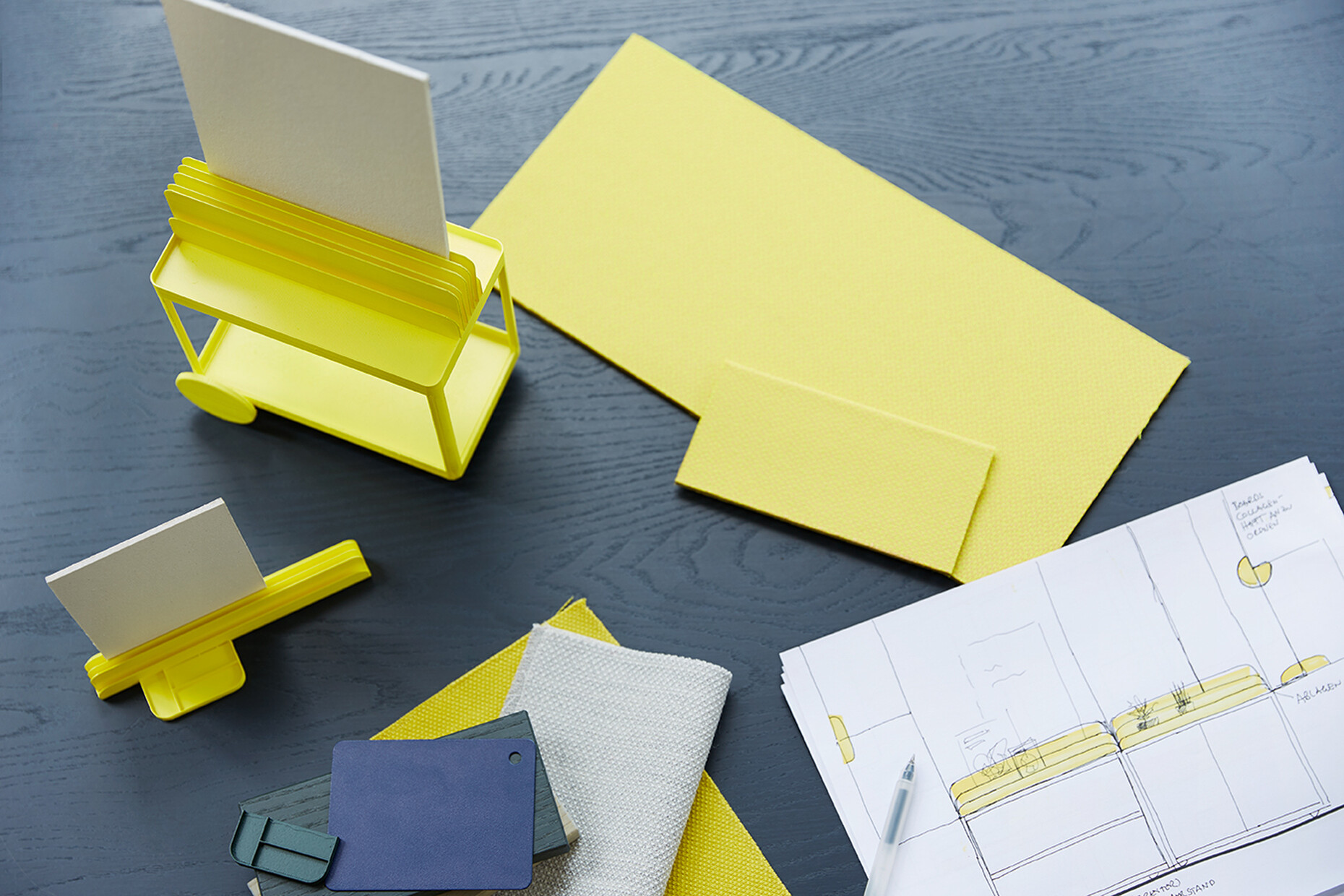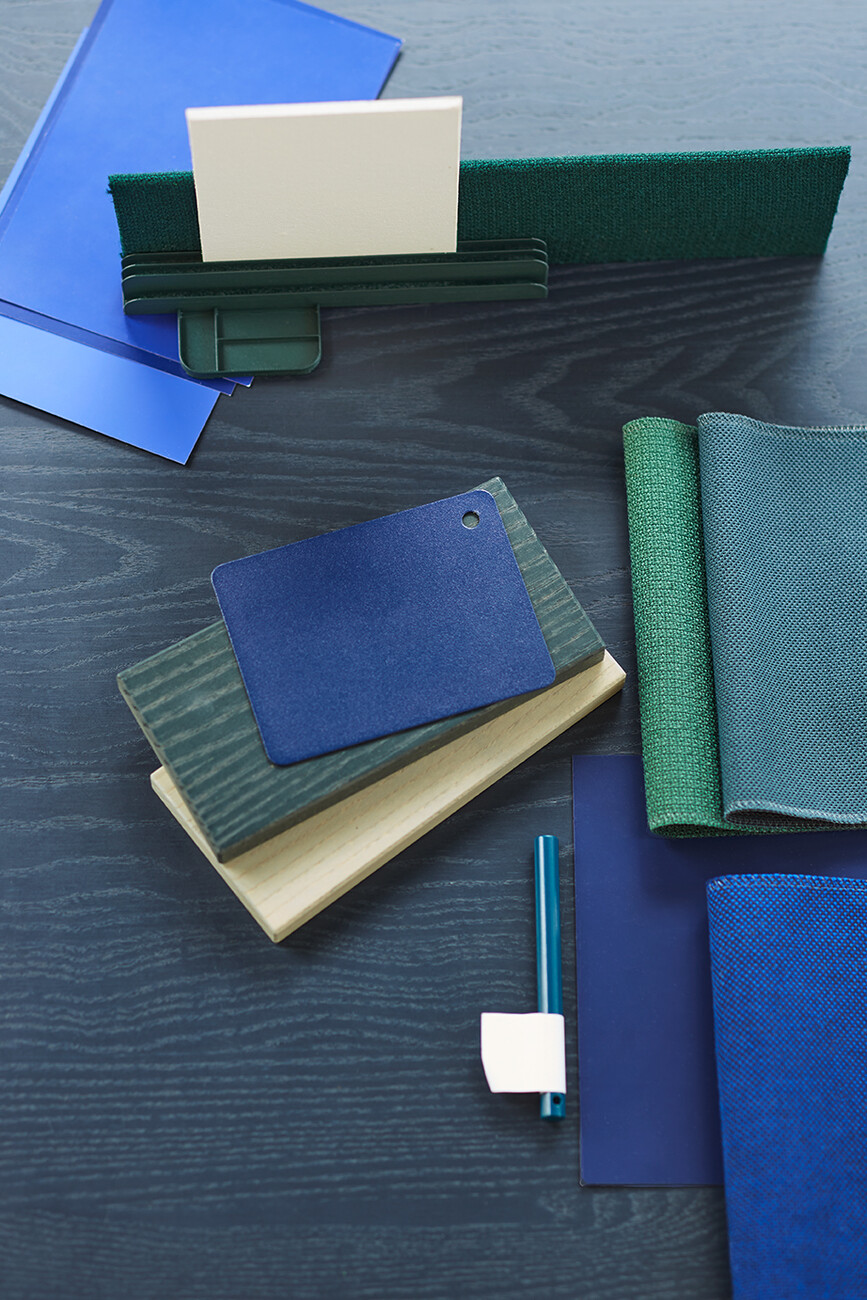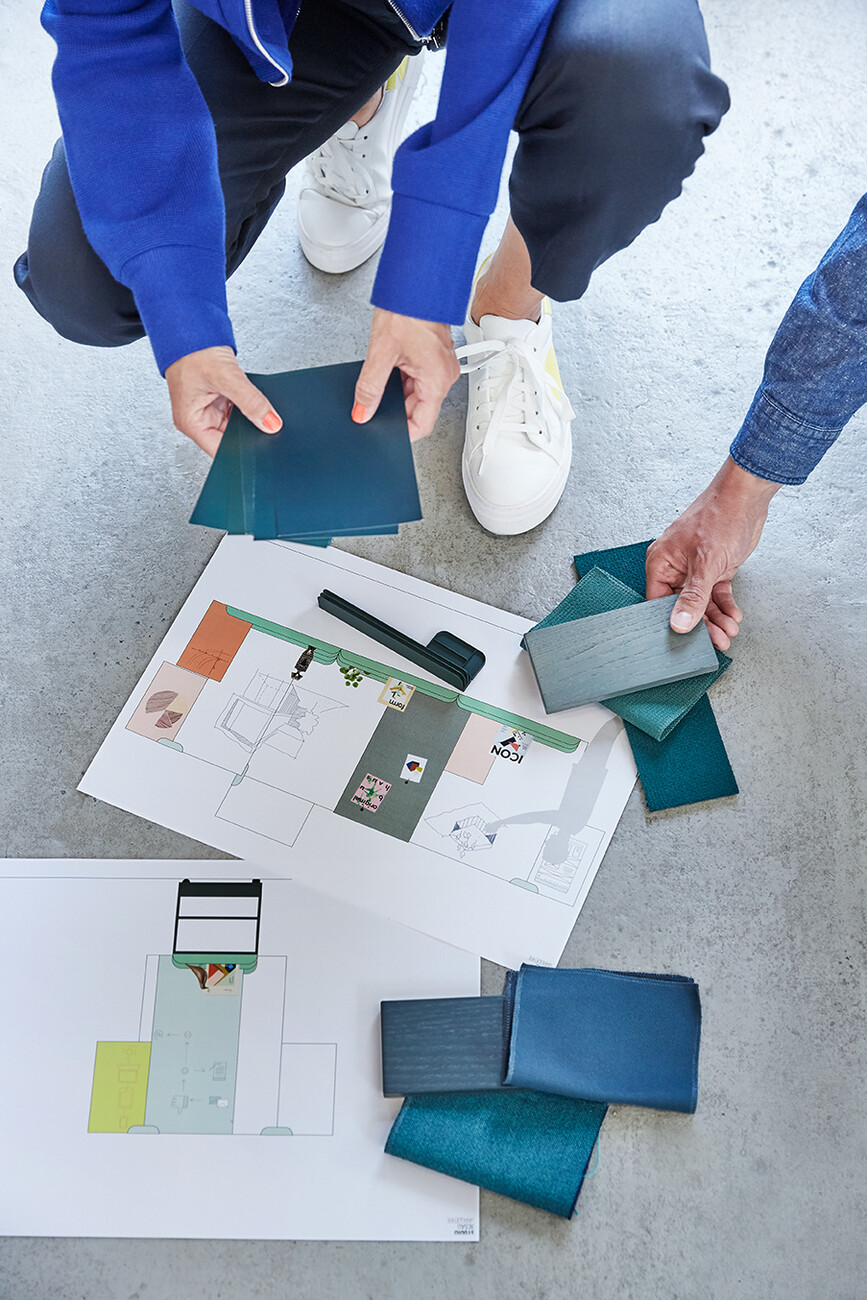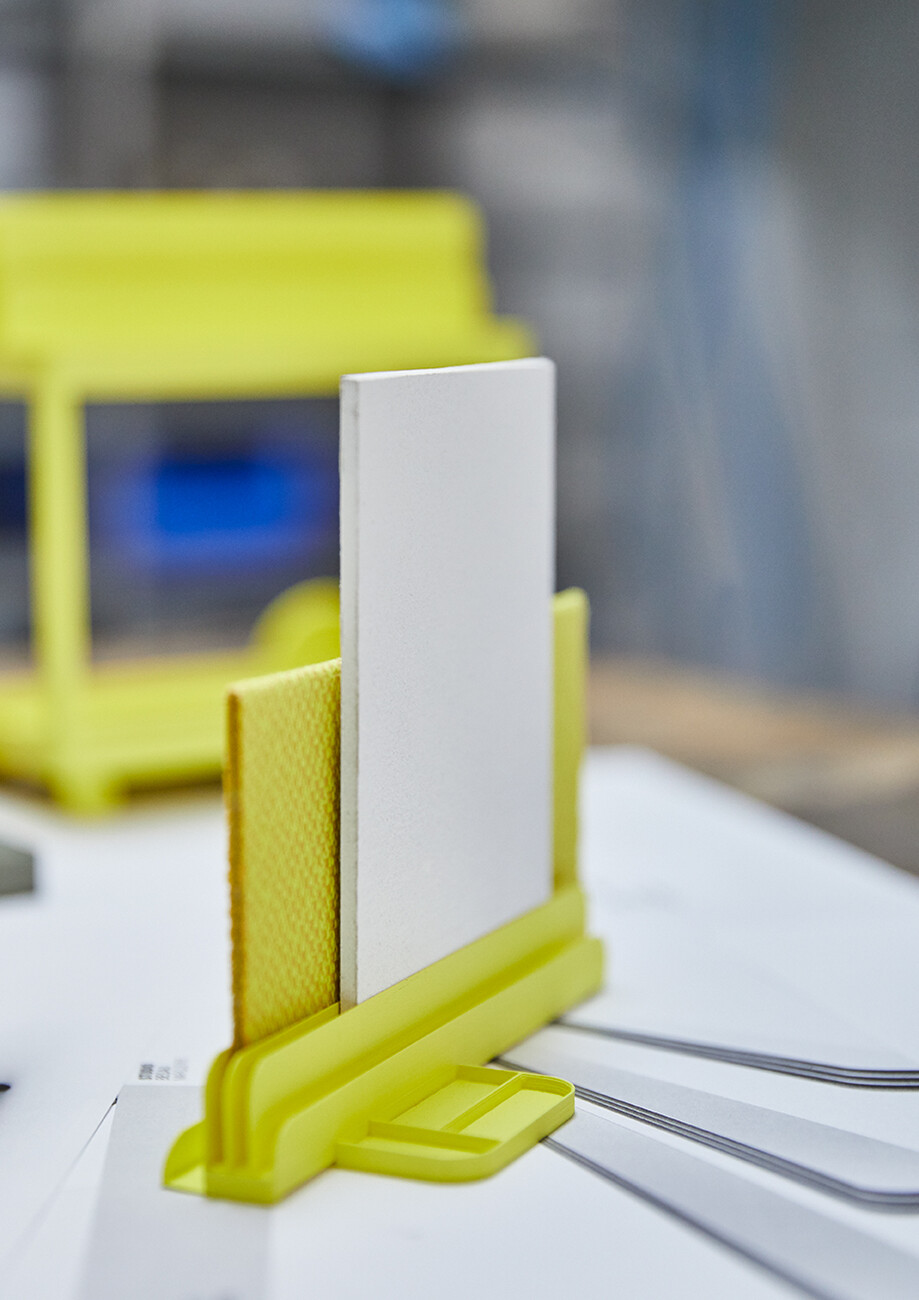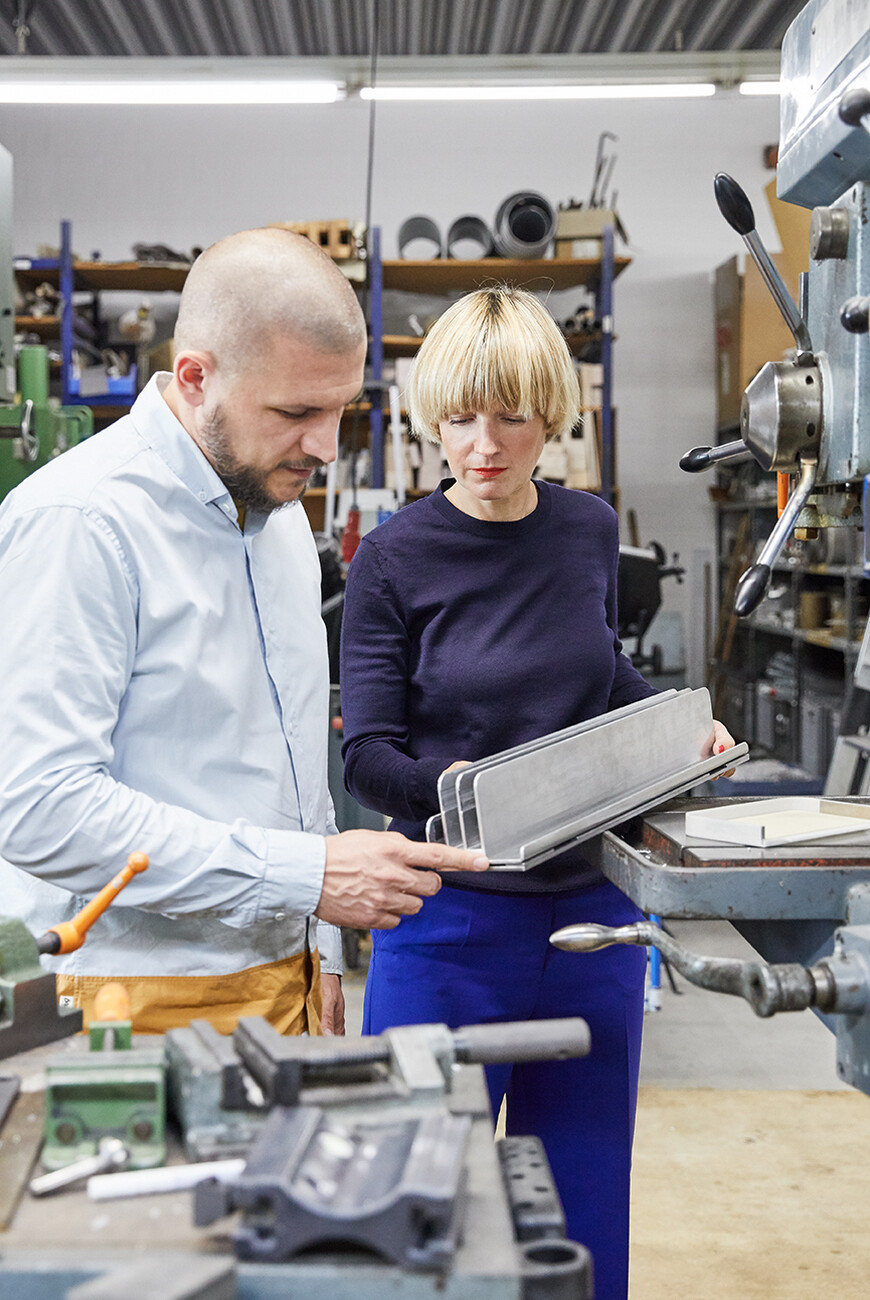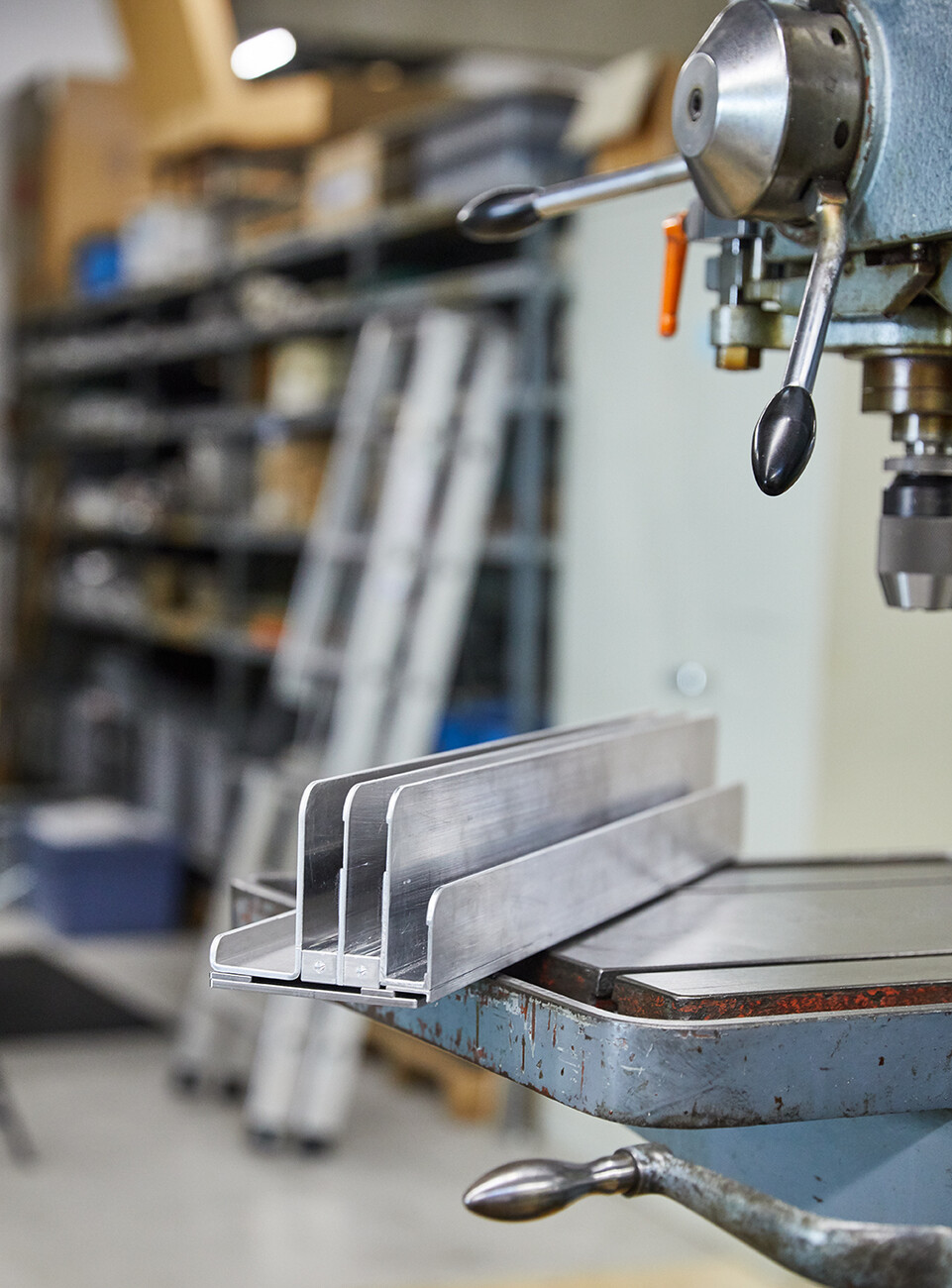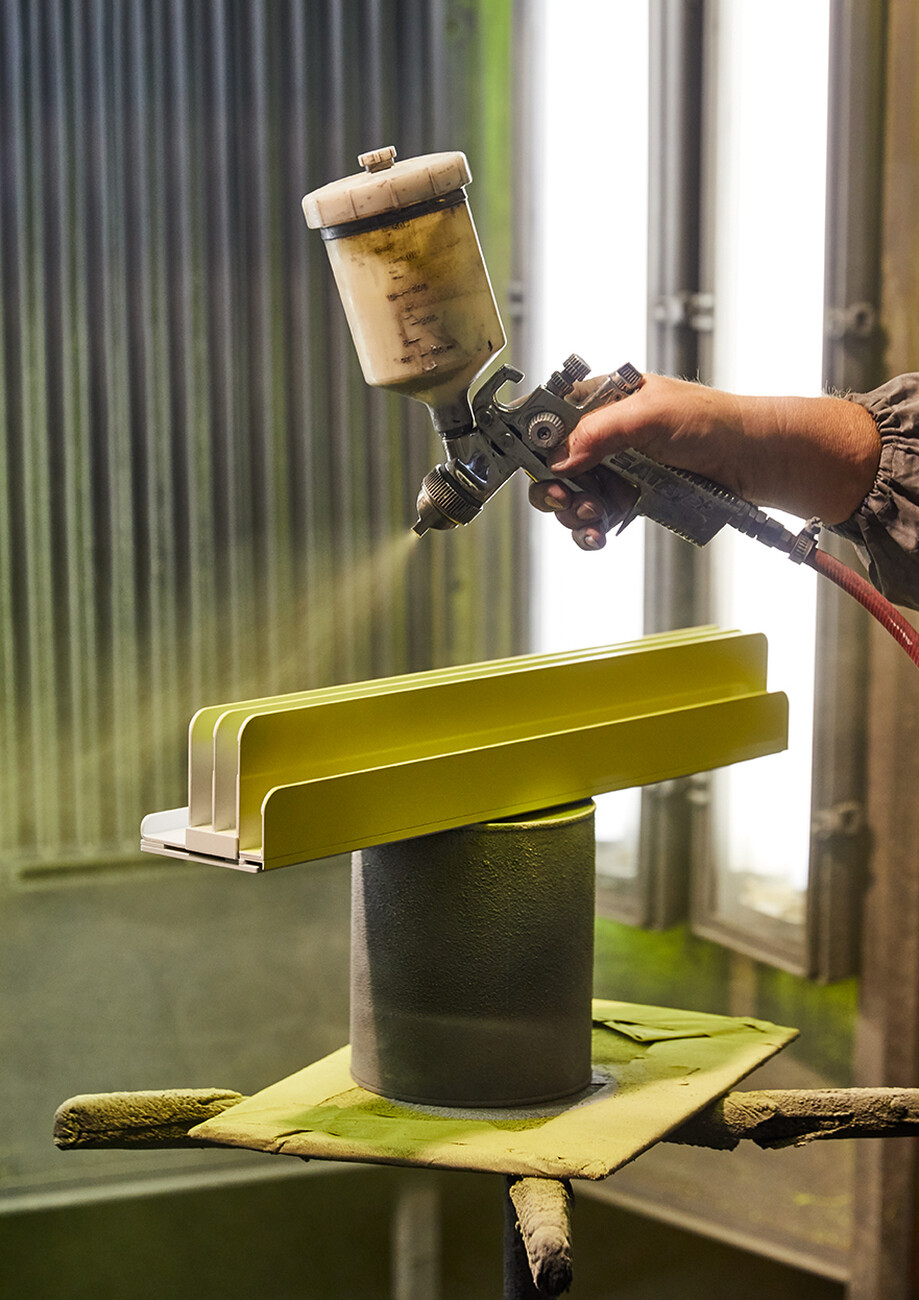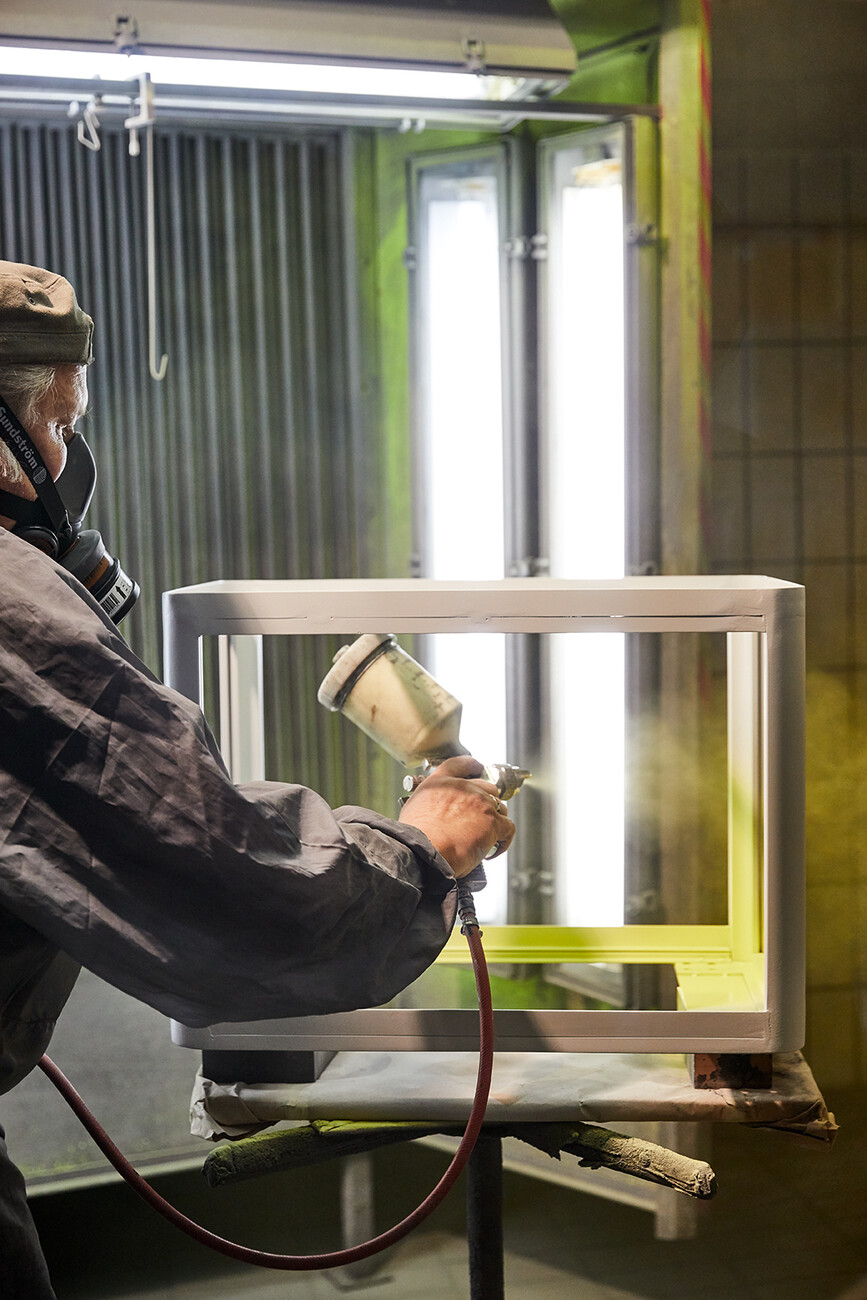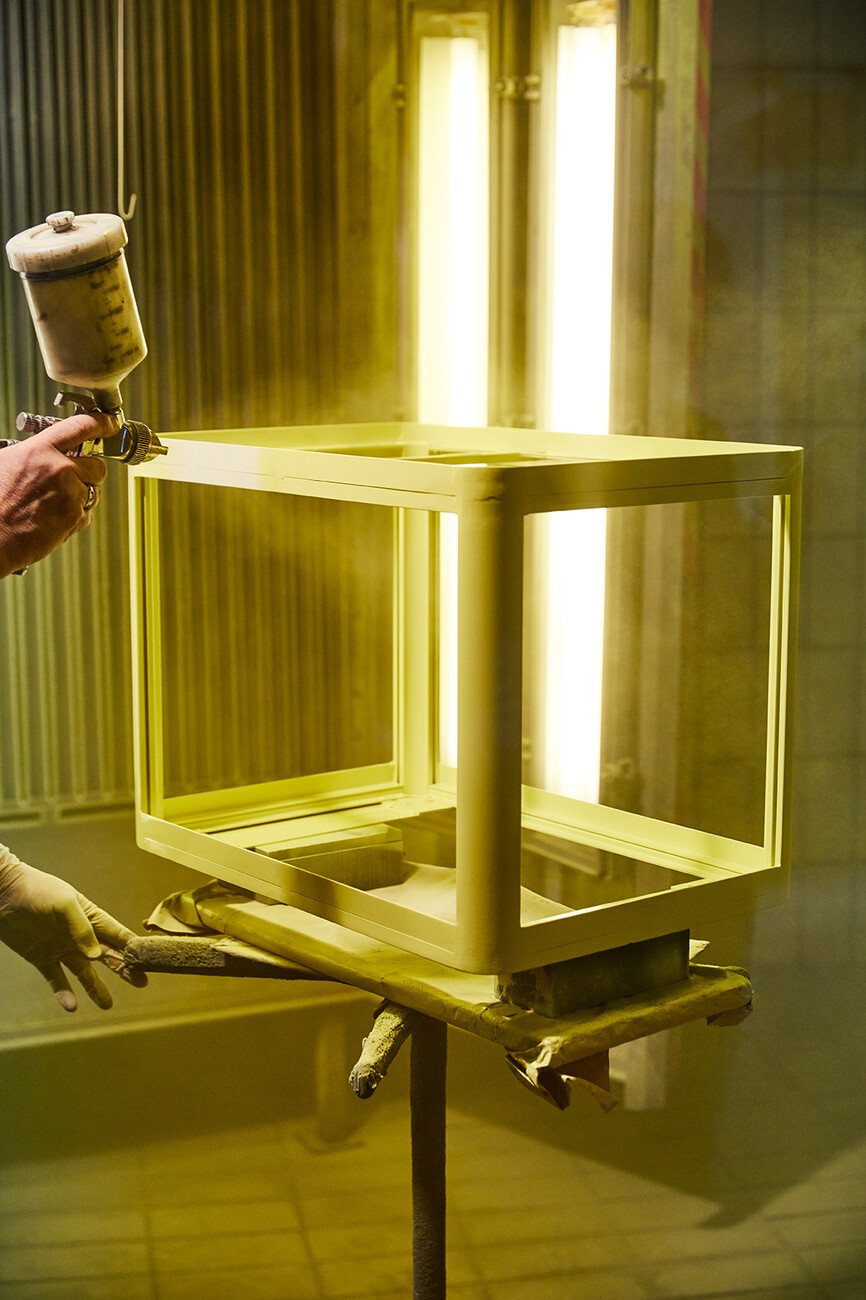STYLEPARK SIGEL
A display of agility
“Studio Besau Marguerre are young creative who tread new ground with their products,” says Andrea Korsten, Head of Product & Innovation Management at SIGEL, the manufacturer of product solutions for the office. The aim of the collaboration was the reinterpretation of a modular display board system in a high-quality design that could integrate aesthetically into any interior. Stylepark hooked SIGEL up with the creative duo to create a product that provides innovative support for agile working both in the office and at home. “We were able to develop a new system from scratch, so to speak, so it was an exciting process,” says Marcel Besau. The basis of "SIGEL Mocon" is a mobile trolley made of metal and wood which – equipped with four wheels – can be moved quickly and easily within the space. While plenty of storage space is provided underneath, the register above is equipped with various compartments. These spaces can be used to stow frameless boards of different sizes, which are available in variants ranging from whiteboards and acoustically effective pinboards to acrylic glass boards. “People work very intuitively with the modules, sketching, slotting an idea further back in the row or bringing another one forward,” explains Eva Marguerre. Thanks to a magnetic mechanism, smaller whiteboards can even be displayed on larger ones so that an individual collage can be created in a matter of seconds.
None of the elements of "SIGEL Mocon" are rigidly designed; each part can be used flexibly. At the same time, the unit is strikingly compact: “We wanted to get away from heavy, solid partition walls,” explains Marguerre. Instead, the design appears homely, incorporating wood and metal with rounded edges, and in its typology it is not unlike a serving trolley. Meanwhile, the register in which the boards are held can also be used for other objects in the home office. Depending on the individual requirements, it offers a very attractive way to present magazines, records or picture frames, for example. “The product is not supposed to be cold and impersonal, but rather to be perceived as a piece of furniture,” explains Marcel Besau. As color experts, Studio Besau Marguerre have come up with a range of elegant variations, ranging from classic black and white to cobalt blue and black green. For a more striking impression, there is also a combination of two statement shades in pared-back sulfur yellow and ultramarine blue. “A timeless color for the office doesn’t have to mean apple green,” says Eva Marguerre.
A leading role
After the initial launch, the collection by Studio Besau Marguerre for SIGEL is set to gradually develop to include everything from accessories such as pens to further fixation elements. “A collection of products that fit harmoniously with one another,” comments Andrea Korsten. The COVID-19 pandemic has increased the relevance of more than just remote working: With a hygiene protector made of acrylic glass that can be slotted easily into the register, the stipulations for minimum distancing between employees in an office can be adhered to. "SIGEL Mocon" thus serves as a flexible space divider. With the longevity of the high-quality materials, the designer duo has also given thought to a sustainable approach.
In Besau Marguerre’s Hamburg studio, which they are currently renovating, the modular board system will playing a leading role in the truest sense: “We designed the products in the collection for SIGEL with agile working in mind. Since it provides much scope for creative approaches, we will of course be making use of 'SIGEL Mocon' ourselves, too,” says Marcel Besau. A case study in their own office, which will be open to outsiders on request: It’s an ideal prerequisite for planners – after all, what system could be better explained by its designers than one they use themselves every day?



